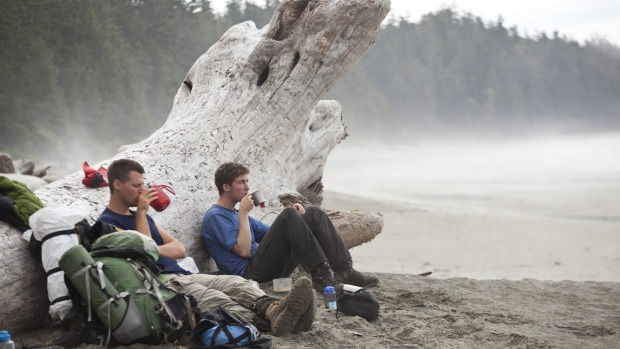
You know you're about to embark on a serious hike when the compulsory safety briefing before you set off includes instructions on what to do if a tsunami hits and you've scrambled up a tall tree.
Caroline, a Parks Canada official whose job apparently is to scare the bejesus out of new hikers, isn't kidding around.
"A helicopter will fly over and make an announcement over a loudspeaker," she explains, to a mostly open-mouthed audience.
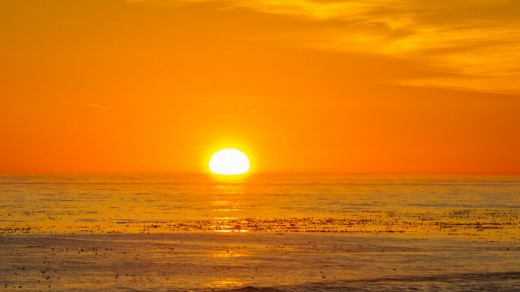
"They may drop a bottle into the water for you to retrieve with further instructions inside."
On a whiteboard to Caroline's left is written the number of hikers who have been evacuated from the 75-kilometre West Coast Trail, in Vancouver Island's ruggedly beautiful Pacific Rim National Park Reserve, since the hiking season began that year. The tally on that day stood at 36. Each year, about 100 people usually succumb to injury, illness or the elements and have to be rescued by boat or helicopter.
Caroline concludes her pep talk with some handy instructions on how to make yourself appear large and threatening to a black bear, and how to identify the paw prints of wolves and cougars.
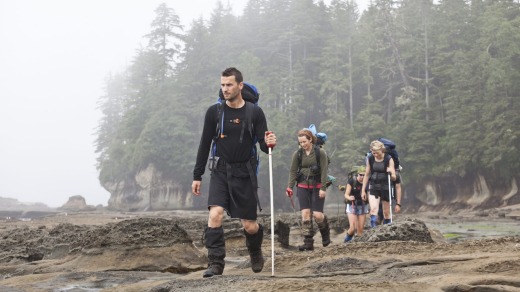
"Have fun!" she says, waving us on our way. Possibly towards death, it seems.
Indeed, the large number of fatal shipwrecks and stranded mariners along this jagged section of coastline known as the Graveyard of the Pacific was the very reason the lifesaving route was hewn through the forest in 1907. The previous year, more than 125 people on board the SS Valencia had perished when their ship struck a reef just off Pachena Point. The public outcry that followed this, the latest in a string of disasters, spurred the authorities to act and build what was then called the Dominion Life Saving Trail for shipwreck survivors and their rescuers.
But as maritime navigation improved over the years, the need for such a lifesaving route declined.
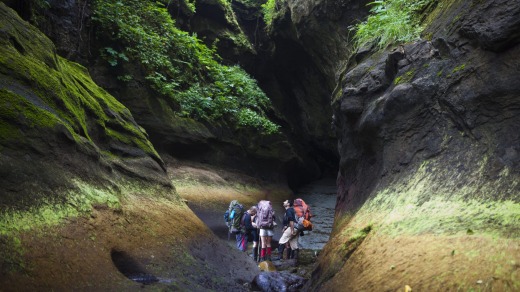
The trail fell into disrepair, only to be rediscovered by hikers such as ourselves eager for an isolated wilderness experience in Canada's back country.
It's now recognised as one of the world's great hikes but, as the safety briefing indicated, it's far from a walk in the park.
Over the week-long hike we would have to be self-sufficient, carrying our own camping gear, food, water filtration system and any equipment we might need. Hence my wardrobe would consist of rotating a couple of t-shirts and shorts, and one roll of squashed down loo paper should last a week, right?
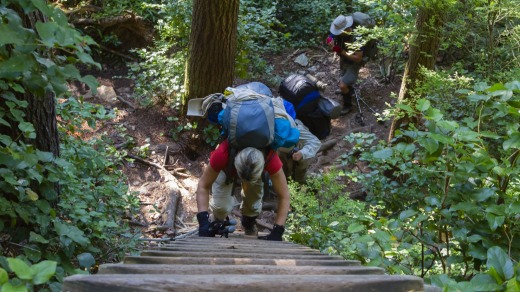
The morning after our safety briefing we caught a boat across the straits of Port Renfrew to the trail head. We had chosen to hike from south to north instead of the opposite direction, tackling the hardest section of trail first. My backpack weighed about 18 kilograms, and we were only covering about six kilometres that day, before setting up camp on the beach. I was quietly confident. But that confidence was about to take a battering.
Immediately the trail snaked up up up, and then down down down. We clambered over huge roots, and fallen tree trunks, through mud pits and along slippery boardwalks that more often than not had planks broken and rotting, or just plain missing. This was tough work, and I'm no wimp.
It was as mentally challenging as it was physically, as each step demanded absolute concentration. One lapse and you could be on your back, as we would learn in coming days.
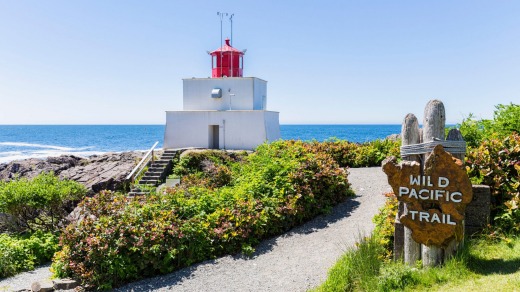
At 11.15am on that first day an almighty boom echoed from the direction of the ocean. An earthquake? We came to an abrupt halt, the tsunami warning from the previous day still ringing in our ears. Already I was scanning the trees for potential hand grips.
It was days later that we learned from a hiker heading in the opposite direction that the shattering noise was in fact dynamite from a property further south on the island. That's the whole point of being out here – you're isolated, where smartphones are rendered dumb and where you can't log onto the web to instantly access information. Your main connection with the outside world is by talking to other hikers, and it's gloriously liberating – as long as there's no tsunami.
There's nothing better than arriving at camp after a day's hard slog on the trail. On that first afternoon we descended a series of ladders into Thrasher Cove, which looked idyllic in the afternoon sun, and set up our tents on a patch of beach above the high-tide mark. The six-kilometre hike had taken us five hours, and we were moving at a pretty fast clip. Within an hour of arriving I'd fallen asleep sitting upright against a large rock. The thin camping mattress was no problem to sleep on that night, or indeed any night.
Each day on the trail presented a new challenge. The sun would suddenly give way to an all-consuming fog that rolled in with barely a moment's notice. Vancouver Island's erratic weather conditions are legendary, and you can never bank on Mother Nature being in a good mood. You're pretty much guaranteed at least one day of hiking in driving rain, when the trail turns to mud so thick it seeps over the top of your gaiters.
The terrain also transformed constantly. The second day as we rounded Owen Point we were scrambling over boulders on the beach the size of small buses. Extremely slippery algae covered much of the rock shelf, and quickly became enemy No.1. Hikers also must carry a tide chart, and carefully stick to a plotted timetable so as not to get caught out on the wrong side of a surge channel.
A unique feature of the West Coast Trail is the scores of ladders that link the beach with the forest. It's certainly an effective, if tiring, way to scale the coastal cliffs quickly. It's not easy to climb near vertical ladders with an 18-kilogram backpack, especially when some of the rungs are wobbly or missing entirely. Anyone with a fear of heights be warned: this hike is not for you.
As we filed along the beach one morning we discovered debris washed up on the shore: a water bottle, a can of insect repellent, a refrigeration container covered in barnacles. Asian script was scrawled on each of the items, and once again thoughts of the Japanese tsunami loomed large. Officials believe there are about 1.5 million tonnes of debris floating towards North America from the March 2011 natural disaster. In 2012, for example, a container washed up on a beach on the west coast of British Columbia with a Harley Davidson motorcycle inside. The motorcycle's owner, Ikuo Yokoyama, 29, was tracked down in Japan after the bike was identified by its licence plate. The tsunami had destroyed his home and killed three members of his family.
Could these items lying at our feet be remnants from that devastation half a world away? There was no way to know for sure, but the idea was certainly sobering.
It was unusual to do a hike such as this and not run into another Aussie. The most common nationality by far was Canadian, and they came from all over the country.
Our evenings usually consisted of a driftwood fire, of sharing meals with our fellow hikers and, if we were lucky, a spot of whale watching. One afternoon a group of four or five whales spurted and slapped the ocean in front of our campsite for hours. We watched their show until the sun disappeared over the horizon in a blaze of red. This was way better than any telly program. Even better perhaps was watching the reaction of another hiker who had never seen the ocean before, let alone a whale breach. Her pure amazement and delight was a sight to behold.
On the final morning on the trail, I unzipped my tent at 6am to sleepily watch a final sunrise. It was still and peaceful – until a dark shape began moving along the rock shelf against the backdrop of the dawning day. I'll tell you what is a more effective morning stimulant than an espresso: a bear. This one was about 100 metres away, and soon ambled up the river away from our camp, but we had still fished the bear spray out of our backpacks, just in case.
As we neared the finishing line, big grins lit up our filthy faces. Despite the many bumps and bruises we had to show for our 75 kilometres, we still managed to break into a run for the last 50 or so metres across the beach. Then we scoffed the biggest piece of chocolate cake we could find, and fell asleep on the bus as we travelled back to our vehicle parked at the start of the trail.
A few days later, standing amid the blaring traffic of downtown Vancouver's peak hour, I was struck by the stimulation of a city life.
Contentment, it seems, is a tent and a driftwood fire on the beach at sunset.
MORE INFORMATION
pc.gc.ca
GETTING THERE
Air Canada flies direct from Sydney to Vancouver with fares from about $1600 per person; see aircanada.com.
HIKING THERE
The trail is open from May to September and during the peak season (June 15 to September 15) only 60 hikers are allowed to set off each day. It is a very physical hike; you need to carry all items including food, cooking and sleeping equipment and a high level of preparation is needed. If you're scared of heights, this hike isn't for you.
The trail fee is $135, plus a reservation fee of $26; see reservations.parkscanada.gc.ca. A number of companies operate on the trail; Coastal Bliss Adventures has a guided hike starting at about $1650, see coastalbliss.ca.